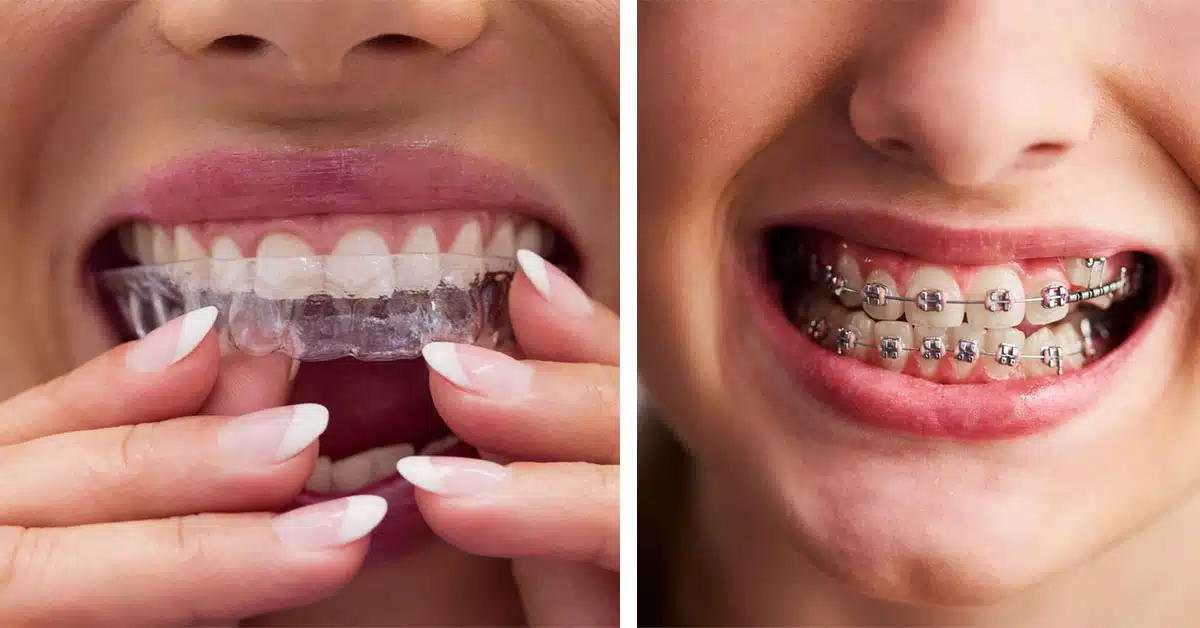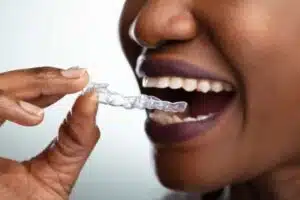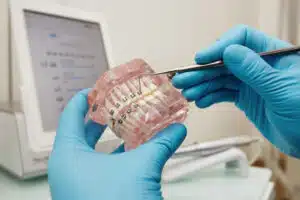
Having a confident smile can significantly impact our self-esteem and overall well-being. When achieving that perfect smile, orthodontic treatment plays a vital role in correcting dental alignment. In orthodontics, two primary options have gained prominence: Invisalign and traditional braces. In this comprehensive blog post, we delve into the age-old debate of Invisalign vs. traditional braces, helping you make an informed decision when choosing the right orthodontic treatment in Palo Alto for your unique needs.
Overview of Orthodontic Treatment
Orthodontics, a specialized field of dentistry, focuses on correcting dental alignment and occlusion issues to improve both the aesthetics and functionality of the smile. By employing various orthodontic treatments, orthodontists can address a wide range of common dental concerns, ensuring optimal oral health and enhanced self-confidence.
The primary goal of orthodontic treatment is to bring the teeth and jaws into proper alignment, creating a harmonious bite and a visually pleasing smile. This process involves the gradual movement of teeth to their ideal positions, guided by carefully applied forces.
Orthodontic issues can manifest in different ways, with each requiring specific treatment approaches. Some of the most common orthodontic problems include:
- Crooked Teeth: Teeth that are misaligned, rotated, or overlapping can be corrected through orthodontic treatment, resulting in a straighter and more symmetrical smile.
- Overcrowding: When there is insufficient space in the jaw to accommodate all the teeth, overcrowding occurs. Orthodontic treatment can help create space and align the teeth properly.
- Malocclusions: Malocclusions refer to irregularities in the alignment of the upper and lower jaws, causing issues such as underbite, overbite, crossbite, or open bite. Orthodontic interventions can correct these misalignments, improving both the bite function and facial aesthetics.
- Spacing Issues: Gaps or spaces between teeth can be closed through orthodontic treatment, creating a more uniform and aesthetically pleasing smile.
When exploring orthodontic treatment options, two main choices often come into focus: Invisalign vs. traditional braces. It pays to examine their respective advantages and considerations to choose the best orthodontic solution for your unique needs.
Invisalign: Pros and Cons
Invisalign is an innovative orthodontic treatment that has revolutionized the field with its discreet and convenient approach. Instead of using metal or ceramic brackets, Invisalign employs a series of clear, custom-made aligners that fit snugly over the teeth. These aligners are crafted using advanced 3D imaging technology, ensuring a precise and tailored treatment plan for each individual.
BENEFITS
1. Aesthetics and Discreetness
When comparing Invisalign vs. traditional braces, one of the most significant advantages of Invisalign is its nearly invisible nature. The clear aligners allow you to undergo orthodontic treatment without drawing attention to your smile. This is particularly appealing for individuals who may feel self-conscious about wearing traditional braces.
2. Removability and Flexibility
Invisalign aligners are designed to be removable, offering a level of flexibility that traditional braces cannot provide. You can easily take them out when eating, brushing, or attending special events, allowing for more freedom in your daily routine. This feature also simplifies oral hygiene practices, as you can clean your teeth without the hindrance of brackets and wires.
3. Minimal Discomfort and Adjustments
Invisalign aligners are made from smooth plastic, which generally causes less discomfort and irritation compared to traditional braces. While some mild pressure may be felt during the initial days of each aligner change, it tends to be more manageable than the soreness associated with braces’ periodic adjustments.
LIMITATIONS
1. Not Suitable for Severe Orthodontic Issues
Invisalign is most effective for treating mild to moderate orthodontic problems. Complex cases, such as severe malocclusions or significant tooth rotations, may require the precision and control provided by traditional braces. Your orthodontist will evaluate your specific condition to determine if Invisalign is a suitable option for you.
2. Requires Strict Compliance and Responsibility
Invisalign’s success relies on wearing the aligners for the recommended 20-22 hours per day. Deviating from this schedule can prolong treatment time or compromise results. Additionally, aligners should be properly cared for and not misplaced, as they are easily removable and may be accidentally thrown away or lost.
3. Higher Cost Compared to Traditional Braces
In general, Invisalign treatment tends to be more expensive than traditional braces. The advanced technology, custom-made aligners, and added convenience contribute to the higher cost. However, it’s important to consider the long-term benefits and personal preferences when evaluating the investment in your orthodontic journey.
Traditional Braces: Pros and Cons
Traditional braces have been a trusted and time-tested orthodontic solution for correcting dental misalignments. They consist of metal or ceramic brackets bonded to the teeth and connected by arch wires. Additional components such as elastics, springs, or bands may be used to exert pressure and guide the movement of the teeth.
BENEFITS
1. Effective for Complex and Severe Orthodontic Problems
When comparing Invisalign vs. traditional braces, traditional braces excel in addressing a wide range of orthodontic issues, including severe malocclusions, overcrowding, and significant tooth rotations. They offer excellent control and the ability to handle complex tooth movements more effectively than Invisalign.
2. Better Control and Precise Tooth Movement
The use of brackets and archwires in traditional braces allows for more precise control over tooth movement. Orthodontists can strategically adjust the tension and positioning of the wires to guide teeth into their desired locations, ensuring accurate alignment.
3. Lower Cost Compared to Invisalign
Traditional braces generally tend to be more cost-effective than Invisalign. The materials used and the treatment process contribute to their relatively lower price point, making them a more accessible option for individuals on a tighter budget.
LIMITATIONS
1. Visibility and Impact on Appearance
Traditional braces are visible and can have an impact on your appearance, particularly for individuals who may feel self-conscious about wearing metal brackets. However, advancements in orthodontic technology have introduced more aesthetically pleasing options, such as tooth-colored ceramic brackets, which are less conspicuous.
2. Potential Discomfort and Irritation
Since traditional braces involve brackets and wires, some level of discomfort and irritation may be experienced. Soreness and sensitivity are common after adjustments or tightening appointments. However, the discomfort usually subsides within a few days and can be managed with over-the-counter pain relievers or orthodontic wax to alleviate any irritation.
3. Dietary Restrictions and Difficulty in Cleaning
With traditional braces, certain dietary restrictions are necessary to prevent damage to the brackets and wires. Sticky or hard foods should be avoided to minimize the risk of breakage. Cleaning teeth with braces requires extra effort, as food particles can get trapped around the brackets and wires, increasing the importance of thorough brushing and flossing.
Invisalign vs. Traditional Braces: Factors to Consider When Choosing
When it comes to selecting the right orthodontic treatment between Invisalign vs. traditional braces, several important factors should be taken into account. By considering these factors, you can make an informed decision that aligns with your specific circumstances and desired outcomes.
A. Severity of Orthodontic Issues
The first factor to consider is the severity of your orthodontic issues. Invisalign is generally suitable for mild to moderate cases, such as minor crowding or spacing issues, while traditional braces can handle a broader range of complex and severe orthodontic problems. Consulting with an orthodontist is crucial in determining which treatment option can effectively address your specific alignment concerns.
B. Personal Preferences and Lifestyle
Your personal preferences and lifestyle play a significant role in choosing between Invisalign vs. traditional braces. If discretion and minimal impact on appearance are important to you, Invisalign’s nearly invisible aligners may be the preferred option. On the other hand, if you prioritize effectiveness over aesthetics and are willing to embrace the visibility of traditional braces, they may be a suitable choice.
C. Budget and Financial Considerations
Budgetary considerations are essential when deciding between Invisalign and traditional braces. In general, traditional braces tend to be more cost-effective compared to Invisalign. However, it is crucial to discuss the financial aspect with your orthodontist and explore any available payment plans or insurance coverage options to ensure that the chosen treatment aligns with your budget.
D. Recommendations from Orthodontists
Seeking recommendations from orthodontic professionals is invaluable in the decision-making process between Invisalign vs. traditional braces. Schedule consultations with experienced orthodontists who can assess your orthodontic needs and provide expert advice on the most suitable treatment option for you. Their expertise and guidance will help you navigate through the various considerations and make an educated choice.
Discover Your Perfect Orthodontic Solution at Palo Alto Orthodontics
Are you ready to transform your smile and achieve optimal dental alignment? Look no further than Palo Alto Orthodontics, your premier orthodontic office serving Palo Alto, CA, and all surrounding areas.
At Palo Alto Orthodontics, we provide exceptional orthodontic services for patients of all ages. Whether you’re a teenager seeking a discreet option like Invisalign or an adult looking to explore the benefits of ceramic braces, self-ligating braces, or LightForce 3D-printed braces in Palo Alto, our experienced orthodontists are here to guide you toward your dream smile.
Don’t let misaligned teeth hold you back from exuding confidence and enjoying the many benefits of a properly aligned bite. Schedule a consultation at Palo Alto Orthodontics today and let our team tailor a personalized treatment plan to suit your unique orthodontic needs. Together, we’ll embark on a journey towards a beautifully aligned and healthy smile.





